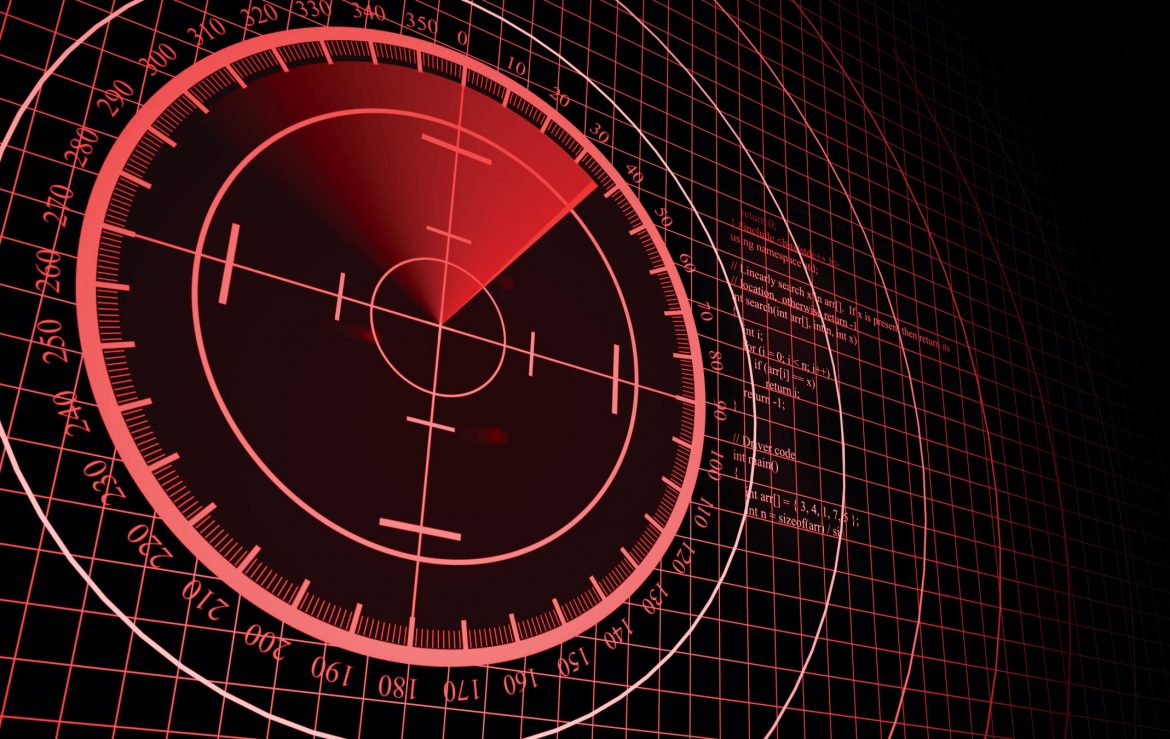Ever since Britain integrated radar technology into its revolutionary air defense system during the Second World War, radars have had a profound influence over the conduct of warfare, especially the back-and-forth, techno-adaptive dialectic between aerial systems and those ground-based systems designed to detect and engage them. Fast-paced developments in passive radar technology may once again be set to bring the advantage to air defense over air offense in this long-running tussle.
This article examines recent developments in passive radar technology, especially specific projects in Russia, Germany, China and elsewhere. Unlike other passive detection systems – like those for Electronic Intelligence (ELINT) and those Communications Intelligence (COMINT), which can detect, locate, and track aircraft based on receiving their radar emissions or signals from onboard communications systems – this new breed of passive radar system holds out the promise of achieving the same effects against non-emitting targets – at the high-end of sophistication scale, stealth aircraft; at the lower-end, small, off-the-shelf drones.
In simple terms, passive radar systems compute an aerial picture from reading how civilian and commercial communications signals bounce off airborne objects. The advantage is that the technique works with any type of signal present in airspace: these could be radio or television broadcasts or the ubiquitous emissions from mobile phone stations. Passive radars use these emissions to detect targets moving through an area of the sky instead of by means of an active radar emitter.
It should not be forgotten, however, that the passive radar concept has been around for a long time; indeed, it dates back to the very beginning of military radar systems, with passive radars in operational service during the Second World War. In recent years, the passive radar concept has generated considerable enthusiasm across a multitude of nations and within their defense production bases and research communities. Indeed, as two experts in the field have noted: “In recent years, the research and development activities focused on Passive Radar have been astonishing in number, diversity, and worldwide distribution.” Multiple weapons manufacturers in various countries are now rapidly pursuing the technology and believe that such systems might be so-called “game-changers” in warfare as well as in dealing with the evolving peacetime security threat posed by commercially available drones.
As with many newly emerging and sensitive defense programs, there is little in the way of detailed information about cutting-edge passive radar projects in the public domain. However, sufficient details exist to begin making inferences, albeit speculative ones, about what the eventual emergence of this new breed of passive radars as operational systems might mean for the military balance in the air domain as well as for addressing a range of evolving security challenges.
A cat-and mouse game
In great part, commentary about passive radars has centered on their prospective ability to negate much of advantages afforded by stealth technology. This potential attribute of passive radars is highly significant in the cat-and-mouse game between stealthy combat aircraft (designed, of course, to be undetectable by radar) and those sensors that attempt defeat this advantage. Perhaps the most pronounced selling point of the hugely expensive U.S. F-35 is that its designers and advocates promise that its invisibility is so complete that it is fair to tout the platform as an invincible weapon – with all the ramifications for employment doctrine that follow from this belief.
But might passive radars, which are vastly cheaper to build and deploy than stealth aircraft (and this is not to mention that huge sums that have gone into research and development (R&D) for stealth technology), negate the F-35’s most distinguishing attribute? German radar-maker Hensoldt believes its system can – and has. Hensoldt claims that passive radar system, named TwInvis, tracked two F-35s for 150 kilometers following their appearance at the 2018 Berlin Air Show in Germany in late April of that year.
Several subsequent media reports about TwInvis’ success in tracking the stealthy F-35 billed the portable German system – with a collapsible antenna, it so compact that it can packed be into a SUV – a potential game-changer in aerial defense. Putting the Hensoldt’s 2018 claim under closer scrutiny, however, suggests caution in reaching the conclusion that passive radars have made stealth technology obsolete. First and foremost, the F-35s were installed with Luneburg lenses on their wings for their journey to Berlin. These little knobs are placed on stealthy aircraft as they pass through friendly air space so that they can be detected by local air traffic control. They artificially create a radar cross section in the frequency bands in which airspace-deconfliction radars operate so that traditional, defense radar systems know what they are dealing with. In short, they (the F-35s) were not flying under stealthy conditions in Germany in 2018.
Nonetheless, minimizing specular reflection at their front sector most stealth aircraft have been optimized for monostatic type active radars operating at higher frequency bands. Passive radars involving lower frequency bands and multi-static type scattering may still prove a viable approach against stealth. Although it remains to be proven whether such passive radar technology can be fully effective against stealthy aircraft designs, such systems will be an improvement on traditional radar emitters whose signals are broken up or absorbed by stealthy aircraft designs so that little reflects to ground-station sensors, leaving defensive-radar operators in the dark.
Passive radars’ biggest ultimate impact in international affairs maybe how they shift the advantage from stealthy aircraft to air defenders, but their potential effects in the air domain might reach far beyond this. This is certainly why many defense companies – both private and publicly owned – are attempting to get into the passive radar business.
New generation of passive radars
Hensoldt’s passive radar system is but one of an emerging generation of sensors and processors that promise to find previously undetectable activities in any given airspace. Russia appears to be developing one of the most impressive passive radar systems. Moscow’s new passive radar, called Tropa (Russian for “path”), uses communication towers to locate signals without transmitting one itself. The manufacturer, OKB-Planeta, owned by Russia’s private defense solutions holding company RTI, claims the radar also has civilian uses – to stop drones spying on people, for example.
More ambitiously, China claims to have revealed a prototype of an advanced quantum radar that is resistant to jamming and may be able to detect stealthy aircraft. Although the system’s technological architecture is rooted in proven science and could be game-changing, the Chinese still face significant development challenges in turning it into an operational capability.
![]()
Other states are working on systems that make use of non-co-operative transmitters – FM radio stations or Digital Audio Broadcasting (DAB) towers – to create an air situation picture using non-emitting target detection. As mentioned above, reflections from emissions are received by one, or a network of, antennas, providing 3D real-time omnidirectional coverage for tracking of multiple targets in congested airspace. Marketing information about such systems typically claim their company’s system will be able to detect, locate, and track non-emitting targets such as drones.
Used independently or within a larger air control system, such passive radar systems could prove highly significant in countering the drone threat to critical infrastructure, such as commercial airports. In the past few years, security analysts have repeatedly warned that the challenge of protecting critical infrastructure, and especially airports, against drones is an insurmountable challenge. Passive radar systems may provide an ability to better defend against multiple non-emitting small drones because detecting and tracking them is the first necessity in the ability to destroy or incapacitate them.
Cautious optimism for air defenders
Modern conflicts, such as in Yugoslavia or Middle East region, have shown combat active radars with rotating antennas have a low survivability rate against a sophisticated military opponent – perhaps somewhere in the region of 20 to 30 minutes. Indeed, active radars are often the first targets to get hit at the outset of a military conflict, whether by anti-radiation missiles, GPS-guided systems, or increasingly so in the future by directed-energy weapons (DEW). Moreover, active radar systems need not be destroyed, only taken out of action. Because the location of these systems can be clearly identified by satellite – most have remained fixed in the same spot for years – the majority are vulnerable to destruction from reliable precision strike weapons. It is against this context that passive radars hold such appeal to air defenders.
Because they possess no emitters, passive radars are covert, meaning pilots entering a monitored area are unaware they are being tracked. Because they have no dedicated transmitters generating heat, they cannot be detected by their thermal signatures. What is more, their broadcast antennas are generally small and quite difficult to spot. For air defenders, this promises a major improvement in their chances of survival should war break out against a capable adversary.
Yet there remain severe drawbacks with the technology and limitations in when and where it can be used. For one thing, passive radars depend on the existence of radio signals and other emissions which may not be present in remote areas of the globe. This perhaps makes passive radar systems more suitable for air defense in one’s home territory than as an operational deployable asset. Moreover, the coverage of such systems is limited up to medium altitudes, since there is practically no broadcast at higher altitudes. In addition, the technology is not yet accurate enough to guide missiles, though it could be used to send infrared-homing weapons close to a target.
As for the techno-adaptative dialectic between stealth and ground-based radars, perhaps neither set of proponents of either technology are correct. As defense commentator Tyler Rogoway surmises: “It [stealth] isn’t a magical cloak of invisibility. It never has been and it never will be. And passive radar isn’t a magic stealth detection tool, either.” However, ongoing advances in passive radar will deny traditional means to defeat enemy air defenses, make air superiority difficult to achieve against a passive radar opponent. In the shorter-term, passive radar’s impact may be felt in homeland security and critical infrastructure protection against small, non-emitting drones than in upsetting the defense-attack dynamic in the air domain. Small UAVs pose as a significant threat to both military installations and industrial facilities as more conventional weapons. Passive radar could maintain surveillance of the airspace immediately surrounding such strategic sites, enhancing security, and providing effective protection from these new threats. Theoretical coverage studies based on bistatic radar cross section simulations and complex propagation models show initial positive signs about the possibility of drone detection with passive radars.
Passive radars are no longer a “sunrise” technology; we are on the threshold of seeing more and more systems entering the marketplace and governments utilizing passive radar to confront the increasing threat from drones.

By: Dr. Ash Rossiter
(Assistant professor of international security at Khalifa University, UAE)













